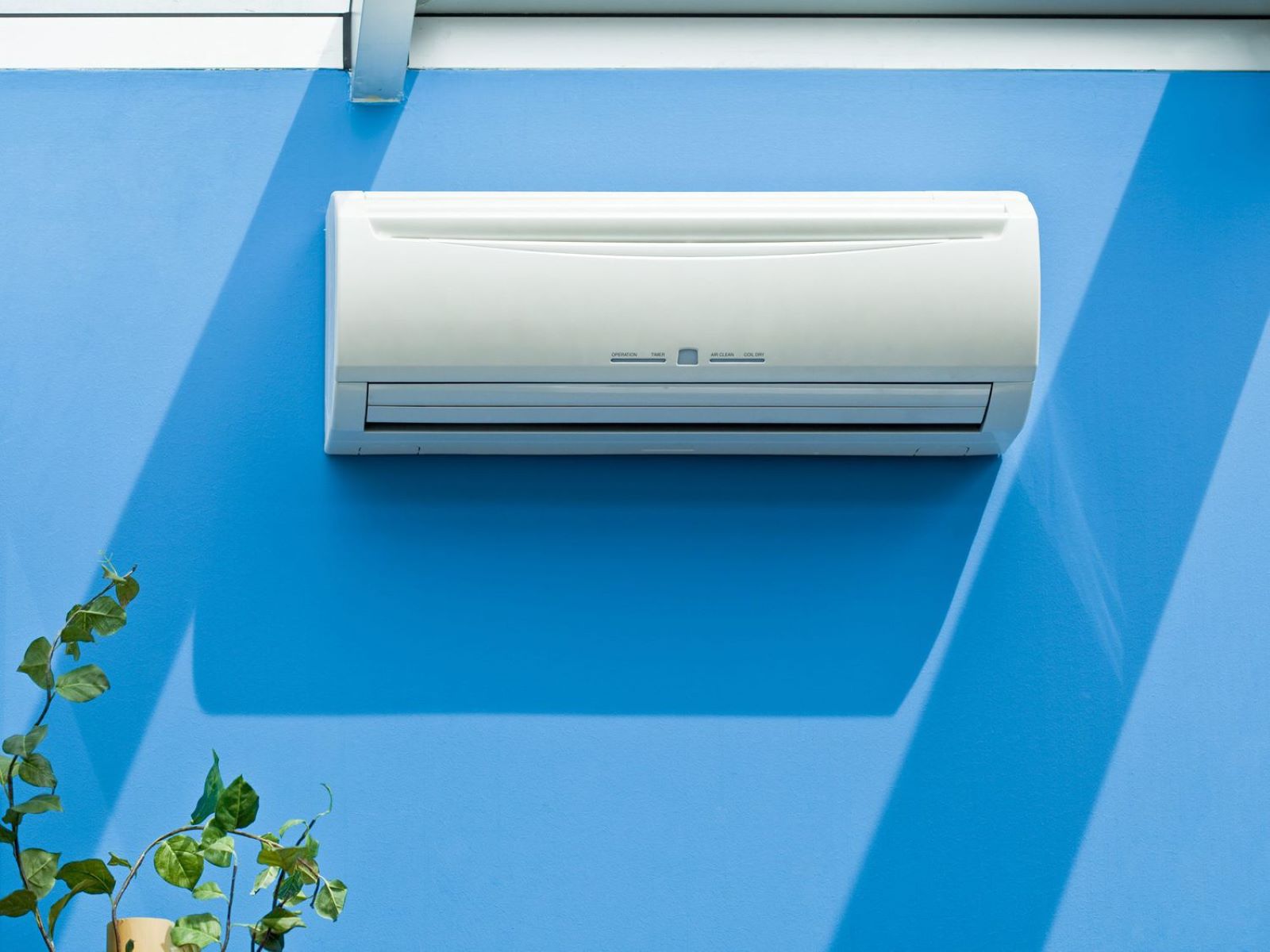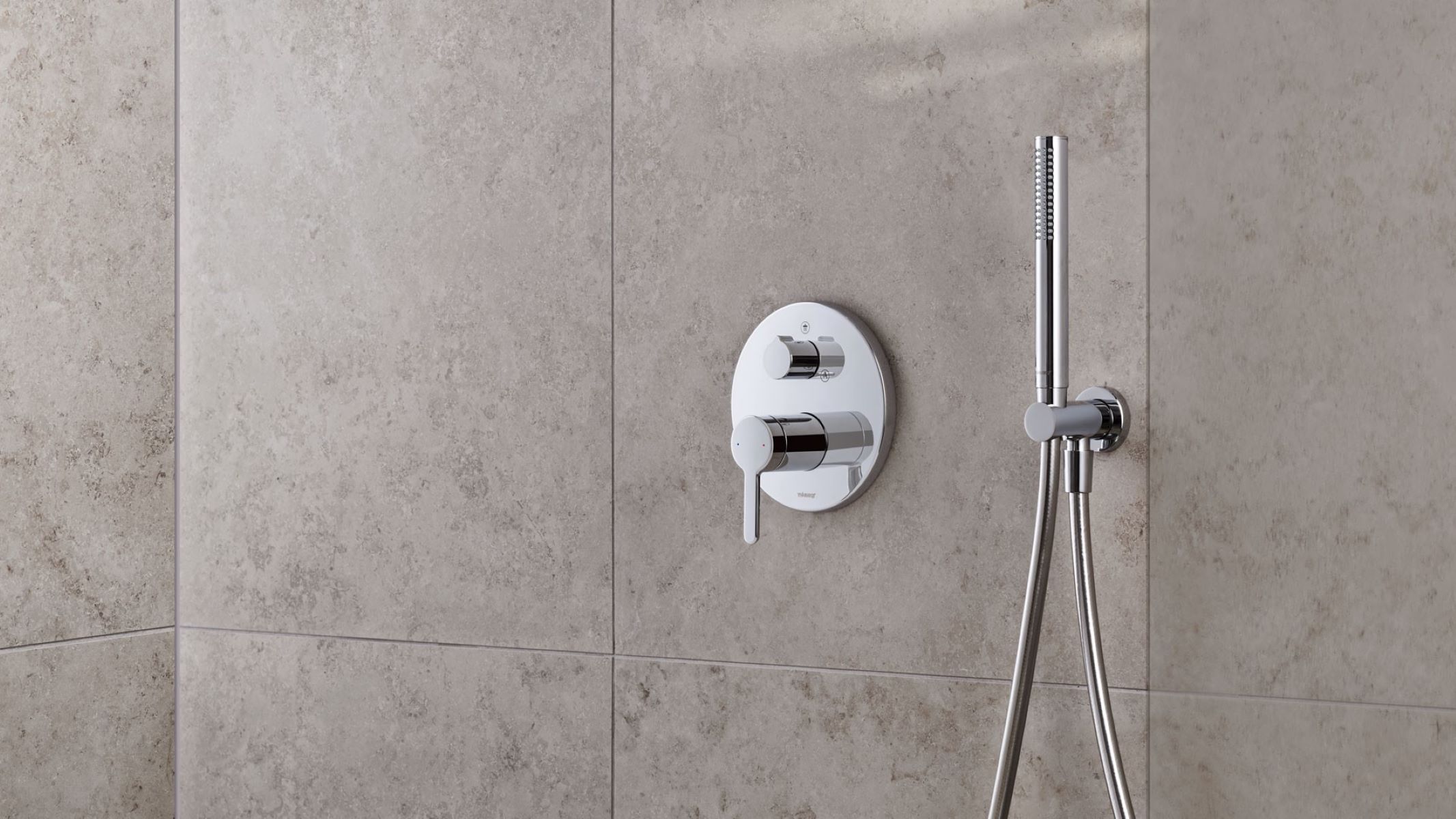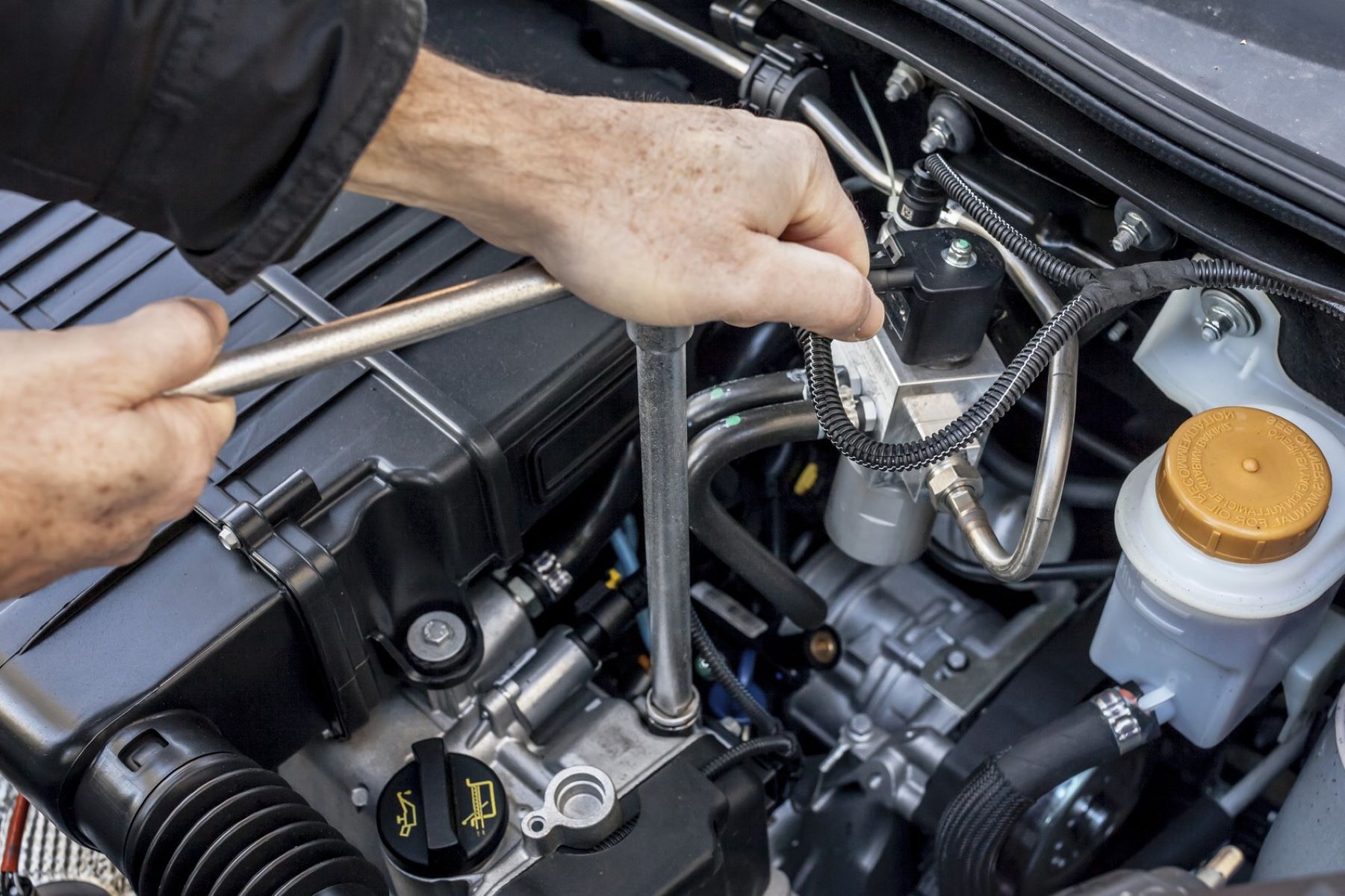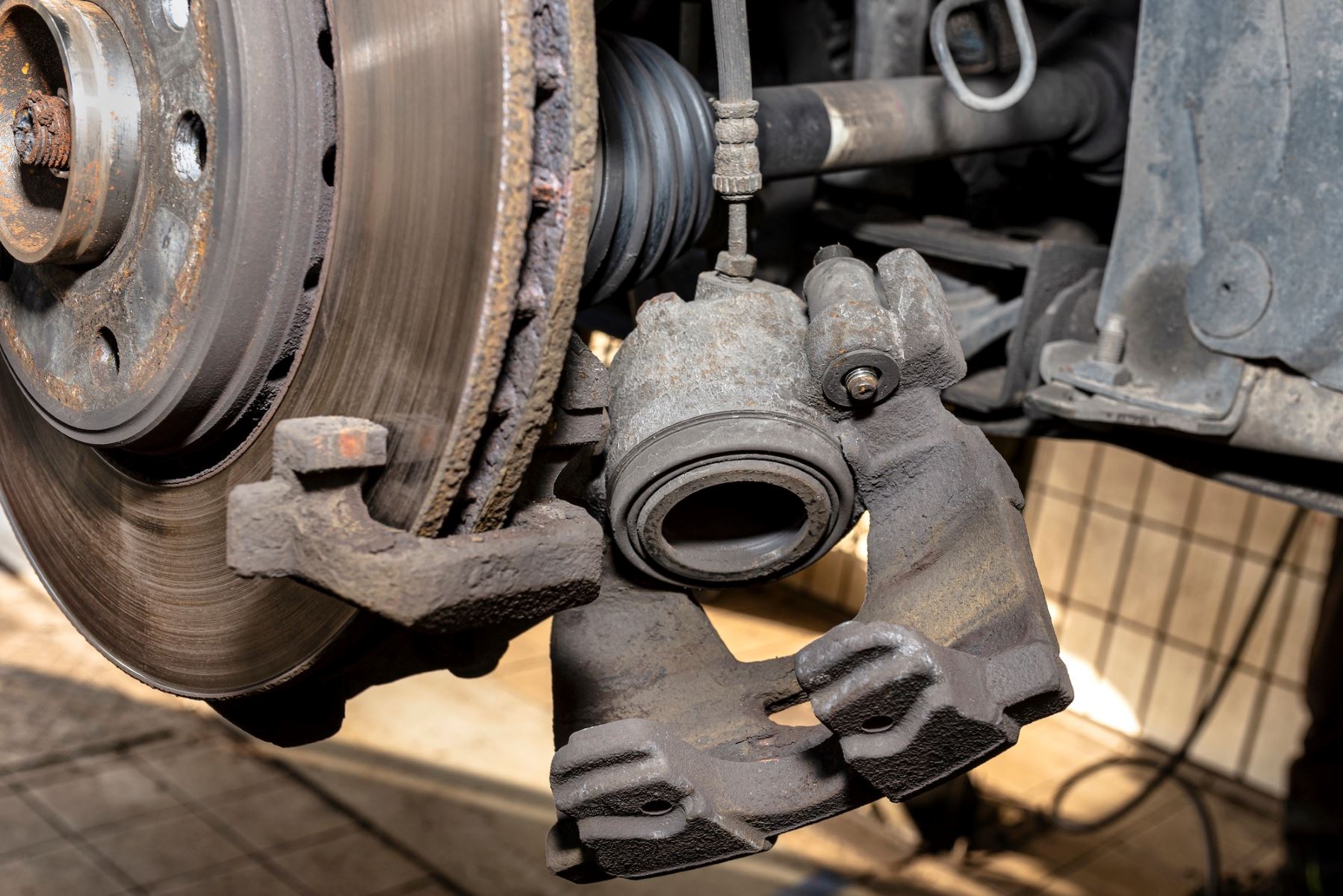Home>Home and Garden>The Impact Of A Clogged Air Conditioner Condenser Coil On Performance And How To Fix It


Home and Garden
The Impact Of A Clogged Air Conditioner Condenser Coil On Performance And How To Fix It
Published: January 10, 2024
Learn how a clogged air conditioner condenser coil affects performance and discover effective solutions for restoring optimal function. Improve your home and garden comfort today!
(Many of the links in this article redirect to a specific reviewed product. Your purchase of these products through affiliate links helps to generate commission for Regretless.com, at no extra cost. Learn more)
Table of Contents
Introduction
The air conditioner condenser coil plays a pivotal role in the cooling process of your home's HVAC system. It is responsible for releasing heat from the refrigerant, allowing the air conditioning unit to effectively cool your living space. However, over time, the condenser coil can become clogged with dirt, debris, and other contaminants, leading to a range of performance issues. In this article, we will delve into the impact of a clogged air conditioner condenser coil on the system's performance and explore effective solutions to rectify this common issue.
A clogged condenser coil can significantly hinder the efficiency of your air conditioning unit, resulting in reduced cooling capacity, increased energy consumption, and potential system malfunctions. By understanding the implications of a clogged condenser coil and learning how to address this issue, homeowners can ensure that their HVAC systems operate at peak performance, ultimately leading to improved comfort and energy savings.
In the following sections, we will discuss the function of the air conditioner condenser coil, the adverse effects of a clogged coil on system performance, common signs indicating a clogged condenser coil, and practical steps to effectively address this issue. By gaining insight into these essential aspects, you will be equipped with the knowledge needed to maintain a well-functioning air conditioning system and enhance the overall comfort and energy efficiency of your home.
Understanding the Air Conditioner Condenser Coil
The air conditioner condenser coil is a critical component of the HVAC system, responsible for releasing heat from the refrigerant. Located in the outdoor unit of the air conditioning system, the condenser coil works in conjunction with the compressor and the evaporator coil to facilitate the heat exchange process that enables the cooling of indoor air.
When the hot, high-pressure refrigerant gas flows into the condenser coil, it releases heat to the surrounding outdoor air, causing the refrigerant to condense into a liquid state. This transformation allows the refrigerant to release the absorbed heat energy, preparing it to return to the indoor evaporator coil to absorb heat from the indoor air. As a result, the condenser coil plays a pivotal role in maintaining the proper functioning of the entire cooling cycle.
The condenser coil is typically constructed from copper or aluminum tubing, which is then surrounded by aluminum fins. This design maximizes the surface area available for heat transfer, ensuring efficient heat dissipation during the refrigerant condensation process. Furthermore, the outdoor location of the condenser coil exposes it to environmental elements, making it susceptible to accumulating dirt, dust, pollen, and other debris over time.
To maintain optimal performance, it is essential to keep the condenser coil clean and free from obstructions. Regular maintenance, including cleaning and inspection, is crucial for preserving the efficiency and longevity of the air conditioning system. By understanding the function and significance of the condenser coil, homeowners can appreciate the necessity of ensuring its proper upkeep to sustain the overall performance of their HVAC systems.
In summary, the air conditioner condenser coil serves as a vital element in the heat exchange process that enables the cooling of indoor air. Its role in releasing heat from the refrigerant is essential for the efficient operation of the entire air conditioning system. Understanding the function and construction of the condenser coil underscores the importance of proactive maintenance to prevent issues such as clogging, which can compromise the system's performance and energy efficiency.
The Impact of a Clogged Air Conditioner Condenser Coil on Performance
A clogged air conditioner condenser coil can have a profound impact on the overall performance of the HVAC system. When the coil becomes obstructed with dirt, debris, and other contaminants, several detrimental effects can manifest, ultimately compromising the efficiency and functionality of the air conditioning unit.
First and foremost, a clogged condenser coil impedes the heat dissipation process, hindering the system's ability to release heat from the refrigerant. As a result, the refrigerant cannot undergo proper condensation, leading to a reduction in cooling capacity. This diminished cooling efficiency forces the air conditioning unit to work harder and longer to achieve the desired indoor temperature, consequently increasing energy consumption.
Moreover, the accumulation of debris on the condenser coil restricts the airflow, disrupting the heat exchange mechanism. This obstruction causes the system to operate at elevated temperatures, potentially leading to overheating and placing undue stress on the compressor. Over time, this strain can result in premature wear and tear, leading to costly repairs or even the need for a complete system replacement.
Furthermore, a clogged condenser coil can lead to an imbalance in the refrigerant pressure and temperature levels, affecting the overall performance and longevity of the HVAC system. The system may struggle to maintain consistent cooling, resulting in uneven temperature distribution within the home. Additionally, the increased workload placed on the compressor and other components due to the reduced heat transfer efficiency can lead to decreased system reliability and a higher likelihood of malfunctions.
In summary, the impact of a clogged air conditioner condenser coil on performance is multifaceted and significant. From reduced cooling capacity and increased energy consumption to potential compressor strain and system malfunctions, the consequences of a clogged condenser coil can be detrimental to the overall functionality and efficiency of the HVAC system. Recognizing these implications underscores the importance of addressing and preventing condenser coil obstructions through regular maintenance and cleaning, thereby preserving the system's performance and prolonging its operational lifespan.
Signs of a Clogged Air Conditioner Condenser Coil
Recognizing the signs of a clogged air conditioner condenser coil is crucial for timely intervention and maintenance to prevent potential performance issues and system malfunctions. Several indicators can point to the presence of a clogged condenser coil, signaling the need for attention to ensure the efficient operation of the HVAC system.
One prominent sign of a clogged condenser coil is diminished cooling performance. If you notice that your air conditioning system is struggling to maintain the desired indoor temperature, despite continuous operation, a clogged condenser coil could be the culprit. The reduced heat dissipation caused by the obstruction impedes the system's ability to effectively cool the indoor air, resulting in decreased cooling capacity and prolonged run times.
Another telltale sign is an increase in energy consumption. A clogged condenser coil forces the air conditioning unit to work harder and longer to compensate for the diminished heat exchange efficiency. This heightened workload translates to higher energy consumption, leading to increased utility bills. If you observe a significant and unexplained spike in your energy usage, a clogged condenser coil may be contributing to the inefficiency of your HVAC system.
Furthermore, uneven temperature distribution throughout the home can indicate a clogged condenser coil. The obstruction's impact on the refrigerant pressure and temperature levels can lead to inconsistent cooling performance, resulting in certain areas of the house feeling warmer than others. If you notice temperature variations from room to room, it could be a sign that the condenser coil requires attention to restore balanced and consistent cooling.
Additionally, if you hear unusual noises emanating from the outdoor unit of your air conditioning system, such as rattling or banging sounds, it could signify a clogged condenser coil. The obstruction's effect on the system's components and the increased workload placed on the compressor due to reduced heat dissipation can lead to operational irregularities and mechanical strain, resulting in audible indications of potential issues.
Moreover, if you observe a decline in the overall efficiency and performance of your HVAC system, it may be a result of a clogged condenser coil. Reduced airflow, prolonged run times, and an overall decrease in cooling effectiveness are indicative of a compromised condenser coil, emphasizing the need for proactive maintenance and cleaning to restore the system's optimal functionality.
In summary, recognizing the signs of a clogged air conditioner condenser coil, including diminished cooling performance, increased energy consumption, uneven temperature distribution, unusual operational noises, and overall system inefficiency, is essential for identifying and addressing potential obstructions. By remaining vigilant and responsive to these indicators, homeowners can take proactive measures to maintain a well-functioning HVAC system and mitigate the adverse effects of a clogged condenser coil on performance.
How to Fix a Clogged Air Conditioner Condenser Coil
Addressing a clogged air conditioner condenser coil is essential for restoring the optimal performance and efficiency of your HVAC system. Fortunately, several practical steps can be taken to effectively rectify this common issue, ensuring that your air conditioning unit operates at its full potential.
-
Shut Off the Power: Before initiating any maintenance or cleaning procedures, it is crucial to turn off the power to the air conditioning system. This precautionary measure ensures safety and prevents any potential electrical hazards during the maintenance process.
-
Remove Debris: Begin by carefully removing any visible debris, such as leaves, twigs, and dirt, from the exterior of the condenser unit. Use a soft brush or a handheld vacuum with a brush attachment to gently clean the exterior surfaces and fins of the condenser coil. Take care not to bend or damage the delicate fins during this process.
-
Clean the Fins: The aluminum fins surrounding the condenser coil can become clogged with dirt and debris, impeding airflow and heat transfer. Utilize a fin comb or a soft brush to carefully clean and straighten the fins, allowing for improved airflow and heat exchange efficiency.
-
Apply a Coil Cleaner: To thoroughly clean the condenser coil, apply a specially formulated coil cleaner following the manufacturer's instructions. These cleaners are designed to dissolve and remove stubborn dirt, grease, and contaminants that may have accumulated within the coil, restoring its optimal functionality.
-
Rinse the Coil: After applying the coil cleaner, rinse the condenser coil thoroughly with a gentle stream of water. Ensure that the water pressure is not too high to avoid damaging the coil or pushing debris further into the unit. Continue rinsing until the runoff water is clear, indicating the removal of all cleaning residues and loosened contaminants.
-
Inspect and Reassemble: Once the condenser coil is clean, conduct a thorough inspection to ensure that all debris and obstructions have been effectively removed. Reassemble the protective grilles or covers and restore the power to the air conditioning unit.
-
Schedule Regular Maintenance: Establish a routine maintenance schedule to prevent future clogging of the condenser coil. Regularly inspect and clean the coil, trim vegetation around the outdoor unit to maintain proper airflow, and consider professional HVAC maintenance to ensure the overall health and efficiency of the system.
By following these steps and incorporating regular maintenance into your HVAC care routine, you can effectively address a clogged air conditioner condenser coil and uphold the optimal performance and longevity of your air conditioning system. Maintaining a clean and unobstructed condenser coil is essential for preserving the efficiency, reliability, and cooling capacity of your HVAC system, ultimately contributing to enhanced comfort and energy savings in your home.
Conclusion
In conclusion, the air conditioner condenser coil serves as a critical component in the heat exchange process that enables the effective cooling of indoor air within residential HVAC systems. However, the accumulation of dirt, debris, and other contaminants can lead to the clogging of the condenser coil, resulting in a range of adverse effects on the performance and efficiency of the air conditioning unit.
Understanding the implications of a clogged condenser coil, including reduced cooling capacity, increased energy consumption, potential compressor strain, and system malfunctions, underscores the significance of proactive maintenance and timely intervention to address this common issue. By recognizing the signs of a clogged condenser coil, such as diminished cooling performance, increased energy consumption, uneven temperature distribution, and operational irregularities, homeowners can take proactive measures to ensure the optimal functionality of their HVAC systems.
To rectify a clogged air conditioner condenser coil, practical steps such as removing debris, cleaning the fins, applying a coil cleaner, and scheduling regular maintenance are essential for restoring the efficiency and performance of the HVAC system. By incorporating these measures into a routine maintenance regimen, homeowners can mitigate the adverse effects of condenser coil obstructions and maintain a well-functioning air conditioning unit.
Ultimately, the proactive maintenance and cleaning of the condenser coil are crucial for preserving the efficiency, reliability, and longevity of the HVAC system. By ensuring that the condenser coil remains clean and unobstructed, homeowners can optimize the performance of their air conditioning units, leading to enhanced comfort, energy savings, and a prolonged operational lifespan for their HVAC systems.
In summary, recognizing the significance of the air conditioner condenser coil, understanding the impact of a clogged coil on system performance, and implementing effective maintenance practices are essential for homeowners seeking to uphold the efficiency and functionality of their HVAC systems. By remaining attentive to the maintenance needs of the condenser coil, homeowners can enjoy consistent cooling performance, reduced energy consumption, and a comfortable indoor environment, ultimately reaping the benefits of a well-maintained and efficient air conditioning system.














